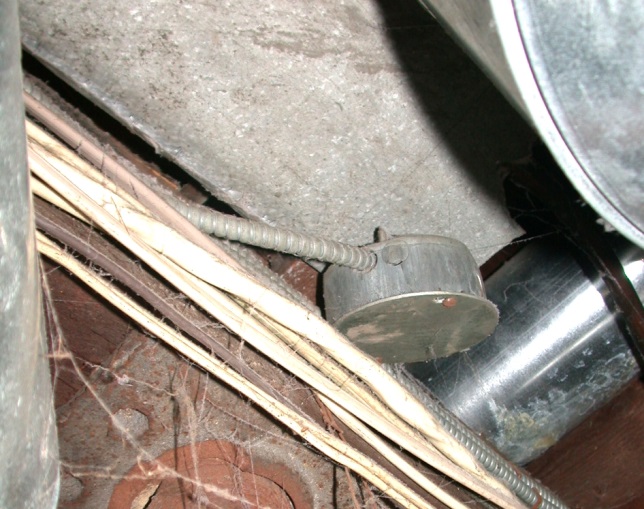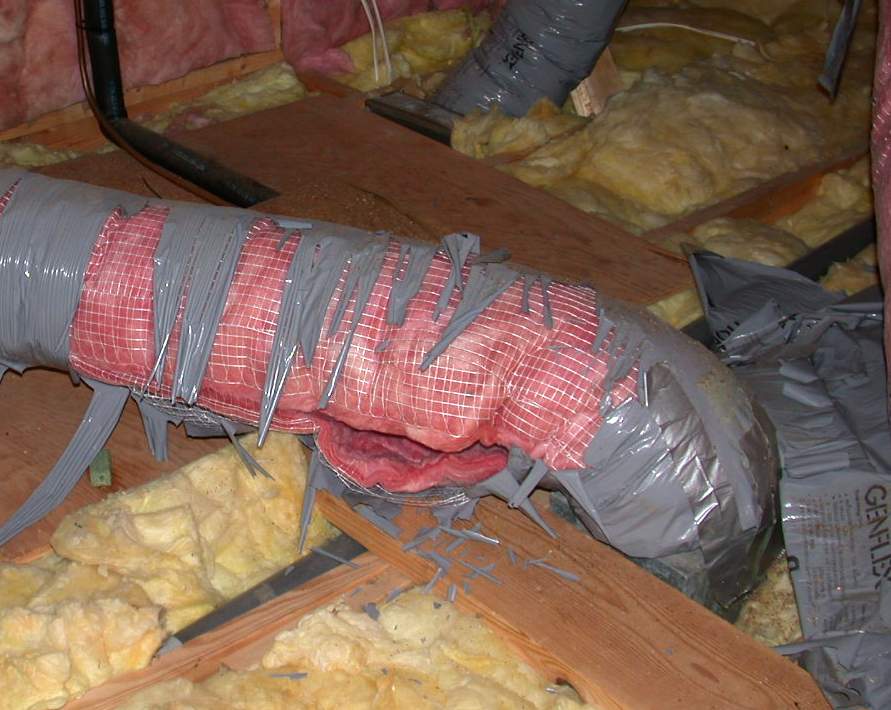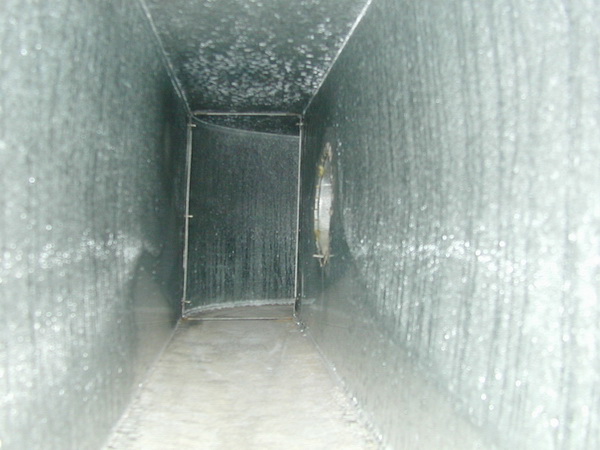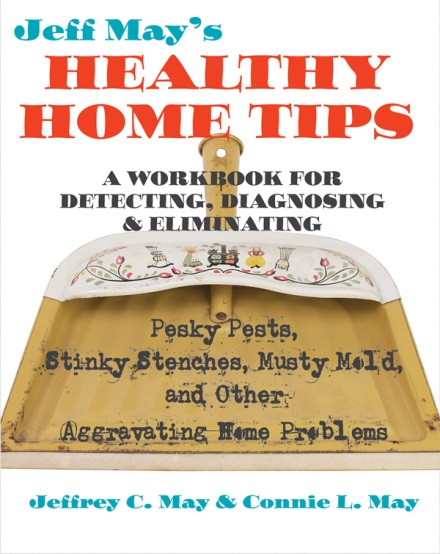IAQ IQ Winter 2018-2019
©2019 Jeffrey C. May
A duct system can cause plenty of IAQ problems if the system is improperly installed, and/or it has been poorly maintained. When ducts contain biodegradable dust and mold growth, odors, mold spores, and surrogate allergens may be carried on airflows into habitable areas.
Hidden treasures? I’ve found Cheerios, dog food, toy soldiers, and even a used condom in ducts.
One owner who had just renovated her home hired me because whenever her heat was running, she detected an unpleasant odor coming from the duct her home office.
She met me at the door with a long list of questions. The contractor who had worked on the house for her must have had some problems getting along with her, because when I removed the floor register from her office supply and looked into the flexible duct with a mirror and flashlight, I found the yellow-stained remains of a “pool” of urine in duct bottom. Wonder how that got there?
In my own home when our two children were little, my wife took a milk carton out of the refrigerator to give them some at mealtime. She tripped on a toy on her way to the table and fell to her knees in front of a supply duct. The milk carton tipped as she fell; before she could right the carton, a few cups of milk poured into the duct. That was a cleaning job and a half, but I was luckier than the fellow who had trouble sleeping in his bedroom due to an odor coming from his bedroom supply. Inside a basement duct elbow for the supply to his bedroom was the foul- smelling residue of a cup of coffee with cream that had gone rancid.
Panned bays: These are usually full of biodegradable dust, some of which in older homes may be ancient. In addition, panned bays can be open at joints and sheet-metal gaps to a musty space.
Such “ducts” are difficult if not impossible to clean (especially if they contain wires and cross bracing). I generally recommend that the sheet metal from such “ducts” be loosened or removed and cleaned, and that the framing be cleaned and paint sealed (or preferably lined with aluminum flashing at the joists and foil-laminated sheet foam at the subflooring <top>).

Duct board ducts: These just can’t be cleaned, and when biodegradable dust collects in such ducts due to inadequate filtration, mold growth ensues. For families with allergies, such ducts should probably all be replaced.
Flexible ducts: Another type of duct that is difficult to clean. And the “shelf life” of this kind of duct can be short if the duct is installed in a hot attic. (The vinyl wrap is about 30% liquid plasticizer which vaporizes out of the plastic, leaving a very thin, brittle plastic film that shreds and allows the insulation to fall.) For families with allergies, soiled flexible ducts may have to be replaced.

Basement supplies: I generally do not like to see hot –air supplies in basements. For one thing, if the basement is moldy, the supplies may pressurize the basement and force basement air up into the habitable rooms. In addition, in the winter after the blower shuts down, warm air can flow passively through a supply into the duct and out of the supplies in habitable rooms.
Leaky ducts: In basements, crawl spaces and attics that contain mold growth, leaky return ducts can entrain mold spores and musty odors and spread them into the system and into habitable spaces.
More problems with ducts in crawl spaces: Crawl spaces are not conditioned, so in cold weather, ducts lacking exterior insulation can be cold. If the temperature of the duct is below the dew point of house air, moisture `may condense; and if dust is present, mold growth will ensue. A similar situation may occur in the summer when the duct surface temperature is below the dew point of house air during humid weather.

Ducts insulated at the interior: Fibrous lining material captures biodegradable dust: landscape for mold growth.
Ducts in a separate air-conditioning system: In a home with hot-water or steam heat and a ducted A/C system in the attic, ceiling supplies and returns should be closed during the heating system. Otherwise, moist air will flow into the ducts and supply the moisture for mold growth. This is a particular problem with a return in a hallway ceiling outside a bathroom or if humidifiers are used.
Keep ducts clean: Occupants may keep surfaces in a building spotlessly clean but they don’t think about ducts; and yet the air that they breathe passes over duct surfaces. If such surfaces contain biodegradable dust and/or mold growth (even in new construction), occupants will be exposed to these substances. As home inspectors, therefore, it’s worth speaking to your Clients about duct maintenance as well as the pros and cons of the types of ducts you see in your inspections.
If any of your Clients have allergies or asthma, it would be worth their while to have the ducts professionally cleaned before they occupy their new home. Tell them to spend money on getting their entire HVAC system cleaned, including the blower cabinet, blower and cooling coils, rather than depend on the cheap, quickie job from a truck-mounted vacuum used to clean only the ducts.


See our book Jeff May’s Healthy Home Tips for more guidance you could share with your Clients.
Available on amazon.com
Wishing you all a happy and profitable 2019
Jeff May
